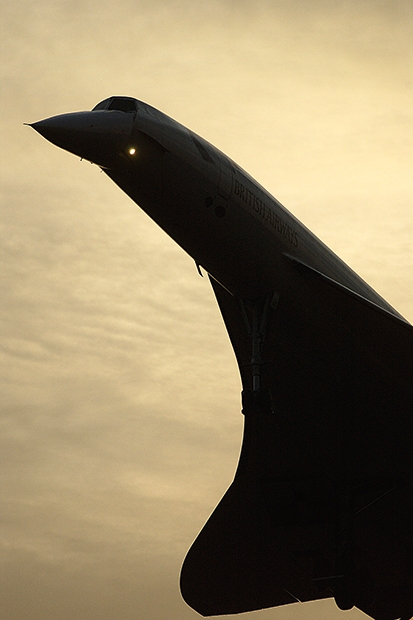The Concorde experience, a fleeting indulgence in luxurious grandiosity, began each day with circumvention of the hugger-mugger of the hoi polloi at Heathrow. In the tranquillity of the exclusive Concorde departure lounge, insulated against the vulgar cacophony of the rest of the terminal building, elite passengers, only 100 at a time, while awaiting the call to the aircraft, were able to sip gratis buck’s fizz and make gratis unlimited international telephone calls.
On my three Concorde trips, one from London to New York and two to Washington, I was impressed by the rich variety and subliminal sameness of my travelling companions, the modish accoutrements of haute couture and the blasé cool of genuine or simulated cosmopolitanism. There was a fragrance of affluence and celebrity, hints of high ranks in diplomacy, industry and commerce and entertainment, a vision of red carpets and substantial tax deductions. When we entered the intimate confinement of the narrow, tubular fuselage, I noticed that the legroom between the seats was a good deal more extensive than what I was accustomed to. Aboard Concorde one could confidently expect beguiling ego-massage.
Leaving London at 1100 GMT, this apotheosis of Speedbirds arrived in New York in three hours and 20 minutes, at 0920 EST. There was just enough time en route for a luncheon of James Bond gourmandism, providing, for example, caviar, terrapin, pheasant, Grand Marnier soufflé, fruits and cheeses and all sorts of vintage wines or, to avoid the stress of decision-making, champagne all the way. When the Machmeter on the bulkhead indicated Mach 2, twice the speed of sound, faster than a rifle bullet, a few of the cognoscenti happened to look up from their coffee and liqueurs with sufficient interest to applaud.
As my first Concorde trip was before the fear of terrorists, I was permitted to visit the flight deck. At 58,000 feet, well above any turbulence, I could see the curvature of the Earth. The captain, with a kind smile, demonstrated his instantaneous satellite-navigation system, so much more convenient than the dead-reckoning, sextant, drift-recorder and, with luck, the occasional radio beacon I had relied on to navigate American-built, 220 mph twin-engined Marauders and Baltimores from the Bahamas to Egypt and Dakotas on to India during the second world war. ‘Sometimes it took about 20 minutes to work out a fix,’ I admitted. ‘It’s a good thing we have this,’ the captain said, indicating his magical push-button. ‘At twice the speed of sound, you couldn’t half get lost.’
Jonathan Glancey is eminently qualified to write a history of Concorde. As the former architecture and design correspondent of the Guardian and the Independent and the author of a successful book on the Spitfire, he fully appreciates the aesthetics and science of aeronautical engineering, and the lucidity of his prose makes his complex subject clearly comprehensible, altogether educational and intermittently entertaining.
He relates how a Supersonic Transport Aircraft Committee, with Morien Morgan as chairman, met in London in 1956 to consider the feasibility of a project that would enhance national prestige, and how it became apparent that the development of a supersonic airliner would be too expensive for British private enterprise, so it had to be subsidised by the associated governments of Britain and France. In this collaboration there was inevitable niggling over details. There was an international debate to decide whether the name should be Concord or Concorde. Tony Benn, the Minister of Technology, soothingly pointed out that e stood for ‘excellence, England, Europe and Entente’, and the French spelling prevailed.
A special alloy had to be concocted to protect the plane’s skin against the heat of friction. At full speed at the cruising altitude, the tip of the nose reached a temperature of 127°C, even though the outside air temperature was minus 59°C. Aerodynamicists refined the shape of Concorde until it became the most elegantly streamlined airliner of all time. After 5,495 hours of tests, in wind tunnels and in flight, Concorde went into commercial service in 1976. There was a hiatus after a crash on take-off at Charles de Gaulle airport in 2000, but service continued the next year until economic pressure ended it finally in 2003. The return fare then was £8,000. I was glad in those days that newspapers and magazines paid my travel expenses.






Comments